Well, I had to go ahead and build Keithís PT-19 to try it out. But, as I dither a lot, I could not decide what engine to use. So, I cut out enough parts to build three planes. I went to the local sign store and asked to buy some yellow, but they only have white coroplast. I only had a little blue coroplast in my scrap pile, just enough for a fuselage and tail surfaces, so blue and white it is for one. I chose to use blue for the fin/rudder like the early Cox PT-19s, rather than matching the wings like the later pt-19s. The other two are all white. Which is accurate, as Cox produced an all-white plane. Since I couldnít decide, I went with one plane powered by a Cox reedie, one by a front rotary, and one electric powered. To make things easier, I decided to leave the landing gear off of the rotary valve plane. Here are the parts I cut all stacked up and laid out:
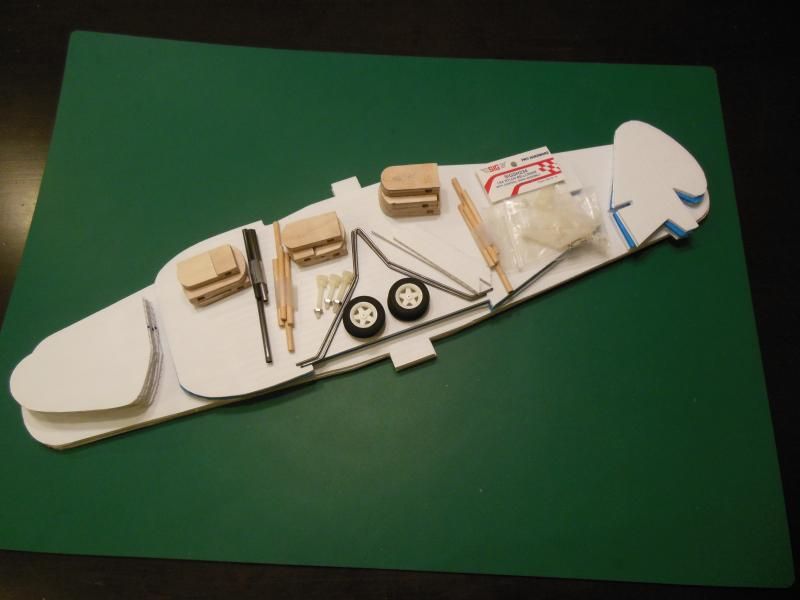
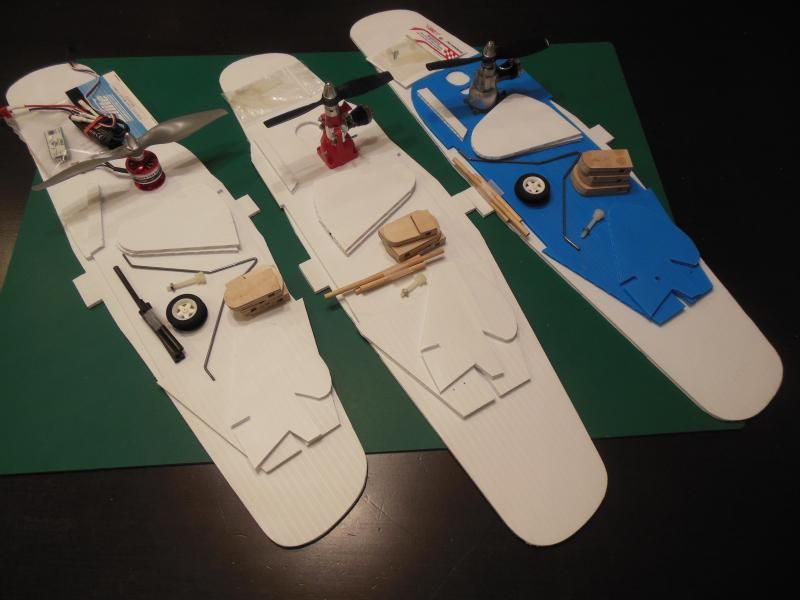
Keith did a great job of documenting how theseíre put together (
http://stunthanger.com/smf/index.php/topic,37584.0.html), so I wonít do a full build thread, as it would be redundant. Iíll just point out the things I did differently. First, Keith did a friction fit of his stabilators for his planes. I like more secure attachment, so what I did was to glue the stab dowel in the left stabilator, and then drill two holes in the right stabilator for screws to keep the surfaces from rotating in flight. In the picture, there are holes drilled in both stab halves, but the left half is actually glued in place. The two washers were put in a pair of pliers and bent to conform to the curve of the dowel through the coroplast.
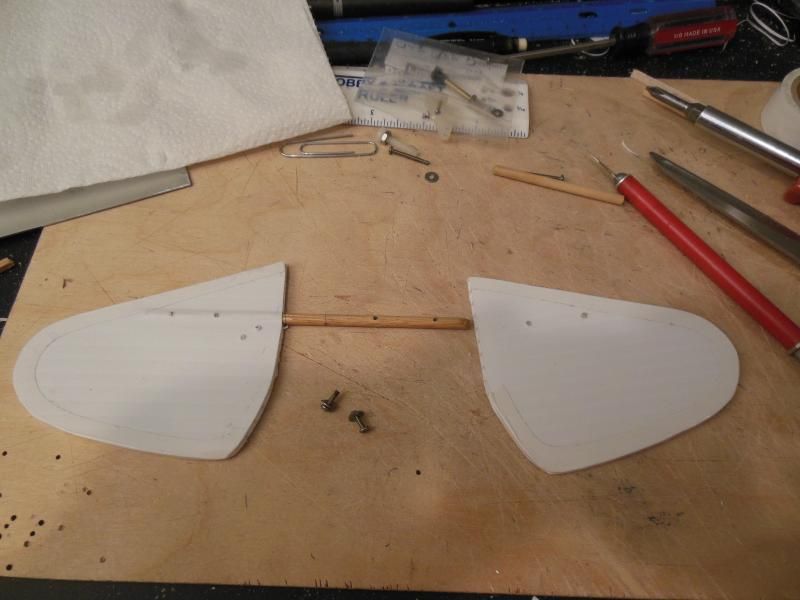
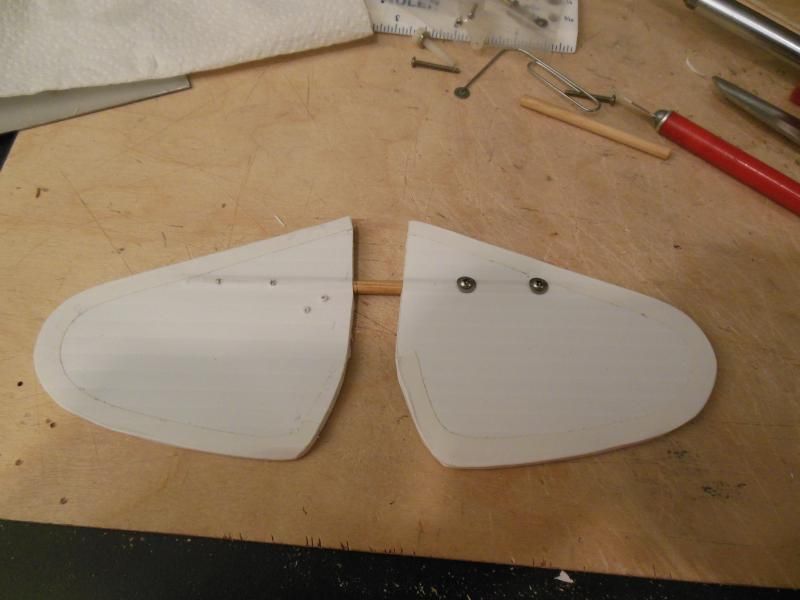
The next thing I did differently was the fuselage formers. Keith used ĹĒ and ĺĒ pine. I didnít use that because 1) I donít have any pine, 2) I donít feel like braving the mess in the garage to get to my drill press, and 3) That just seems like huge chunks of wood to use for the formers. Instead, what I did was take some scrap 1/8Ē and 3/32Ē ply to make the formers. I sandwiched the 3/32 between the 1/8 and left holes in the middle for the dowels. Since I was planning on a little more power than a standard Babe Bee, I decided to make a former at the leading edge of the wing also, where Keith opted not to.
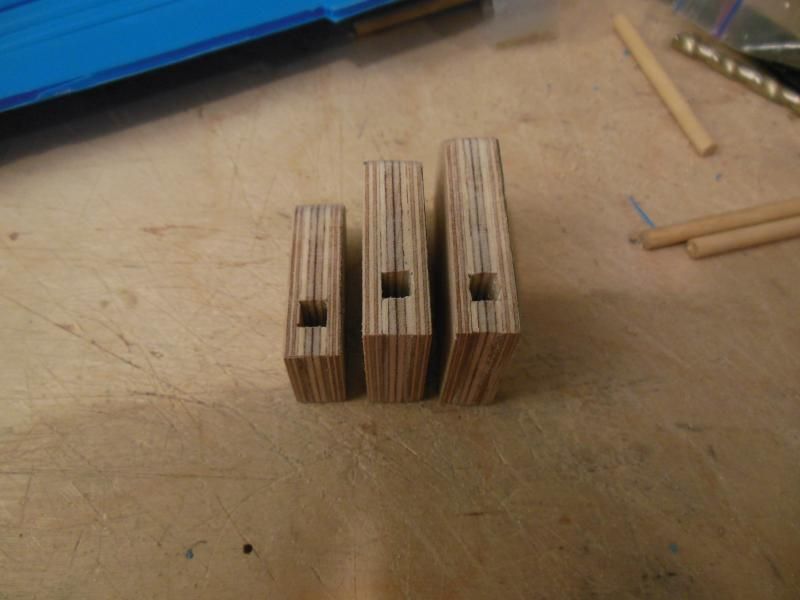
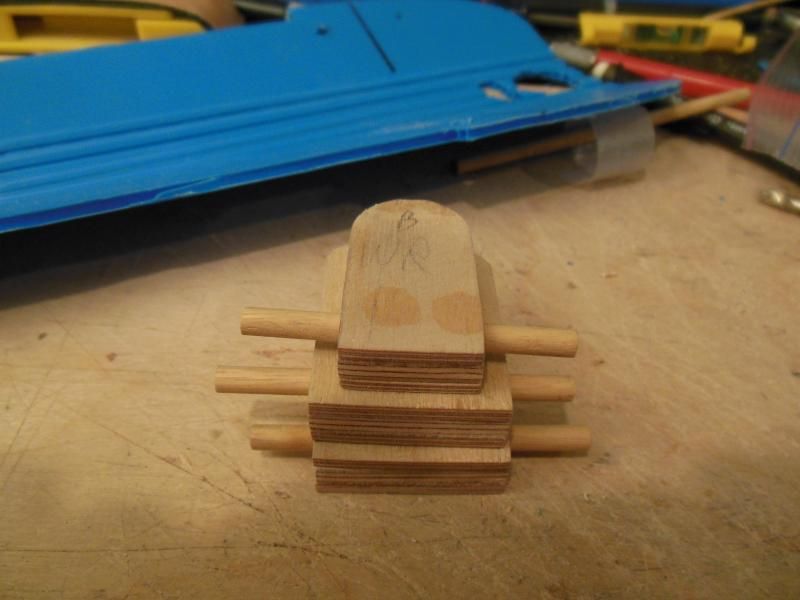
But, these still seemed like overkill, so I tried using only enough 1/8Ē to bracket the dowel hole.

But, you know, Keith is a pretty smart guy. So, Iíll leave the former at the front of the wing on the rotary powered plane, but not use it on the other two.
Another thing I did was to strengthen the area beneath the dowels in the coroplast. With the rotary valve plane, I used some scrap 1/8Ē spruce sticks. For the other two, I used bamboo skewers sanded to fit in the flutes of the coroplast. To keep the screw holding the top of the firewall from tearing forward through the coroplast over time I also glued a piece of spruce stick forward of the screw hole above the firewall.
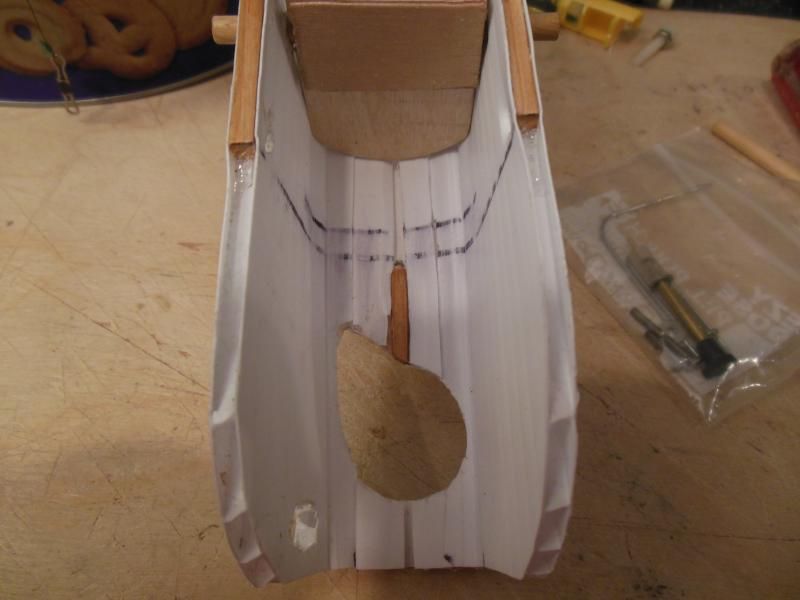
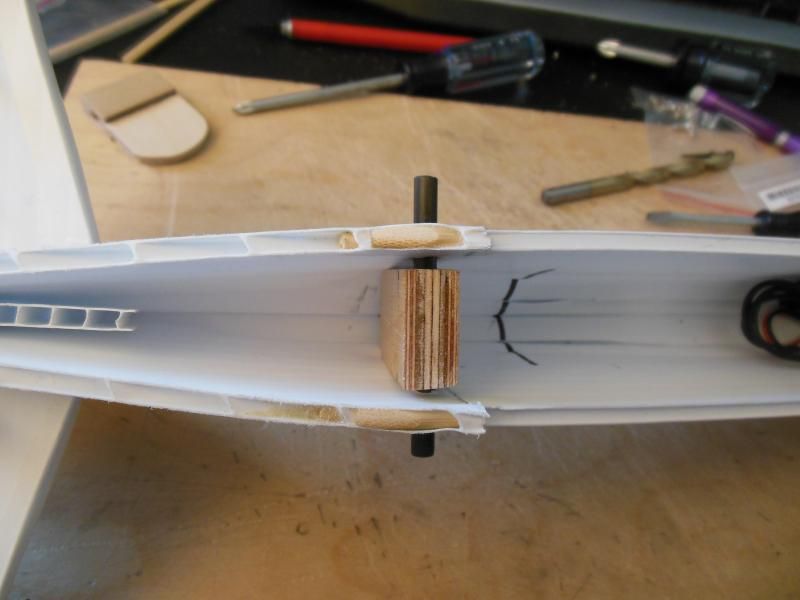
Keith has you hold the formers in place, and then stick a screwdriver through the plastic. Here I am clamping the formers in place and making the holes for the dowels.
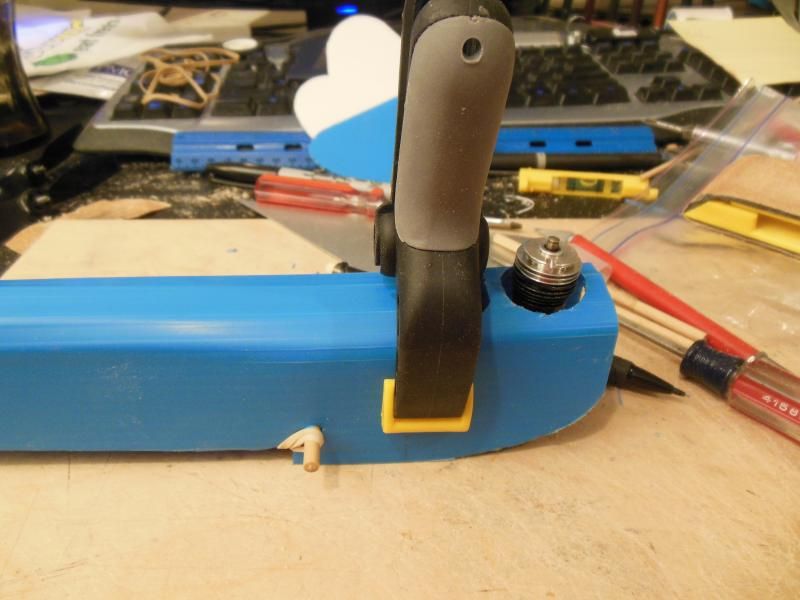
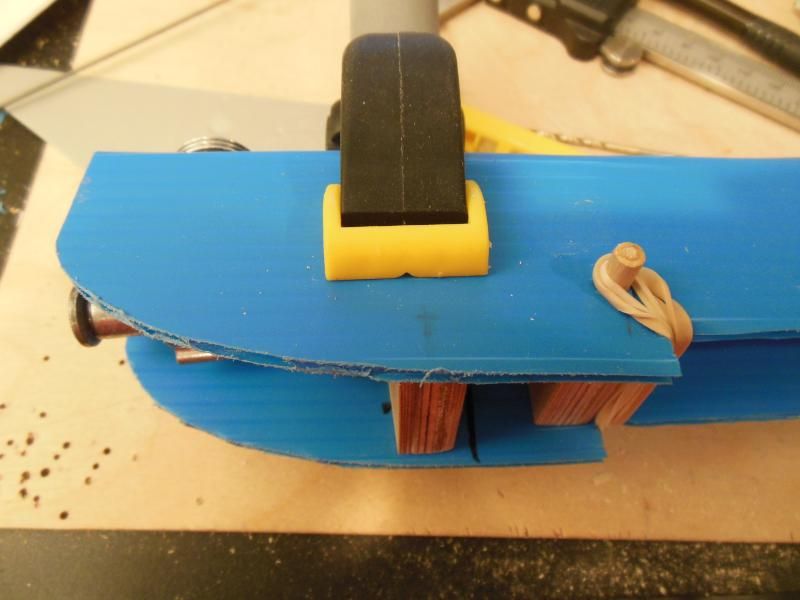
It wasnít pretty afterwards. For the second two planes I just measured and marked the hole locations, then drilled them out with the fuselages flat on a work surface.
Another thing I did on the glow powered planes was to cut the sides of the fuse such that the wing and the top of the fuselage were parallel. I did the electric the way Keithís plans show. If I do another of these, Iíll stick to Keithís plans, because when I cut the wing saddle parallel to the top of the fuse, it makes the engine point too far down to get the right thrust line.
Since I was going to use a more powerful rotary valve engine on one, I decided to make a carbon fiber spar for that wing.
I had to go out of town to see my mother-in-law in the hospital, so I decided to quickly finish one plane so I could take it with me. When I first saw Keithís planes, I thought they were perfect for travelling. Just take them apart and they made a nice flat pack. I put the plane in my carry-on bag. It fit perfectly and took up minimal room. The one thing I did do to make sure there was no problem at check-in, was to ensure the pushrod was no longer than 7 inches. I checked TSA regs on what is allowable in a carry-on, and it states that you can take screwdrivers and sharp tools so long as they are less than 7Ē in length. My pushrod is exactly 7 inches. The plane had no markings, and was bare bones, but it was fine for the purpose. Hereís how it would look flat packed for a trip:
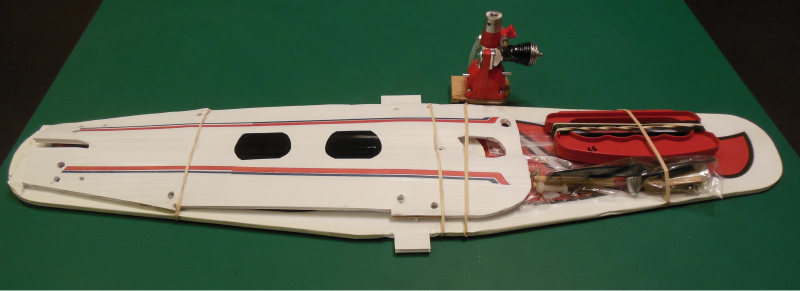
Unfortunately, when I went to fly the plane with some guys in Phoenix, the plane torque rolled in on the hand launch and lost line tension. The results were non-optimal.
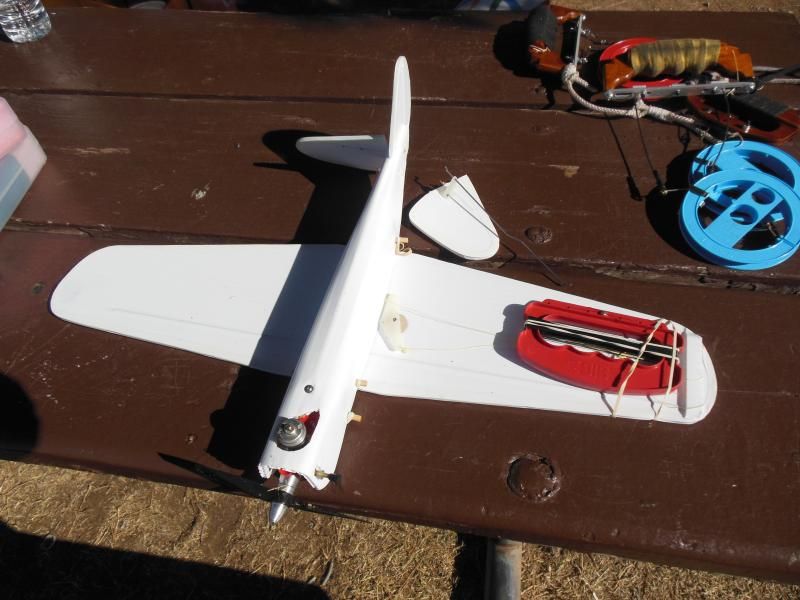
Oh, well. I had a piece of dowel the right size, so I fixed it in a few minutes when I got home. Iím thinking Iím going to make a set of landing gear for this one so it can R.O.G. and avoid the torque roll on launch.
But, on to the other two planes. After a month of attending to other things, I got back to them. The reedie plane went together quickly, and with no issues. The electric plane took a little longer, but it went together rather straight forward also. I ran out of 3/32 dowel, so I used carbon fiber tube for the dowels on the electric plane. Hereís how the electronics are tucked away for the electric.
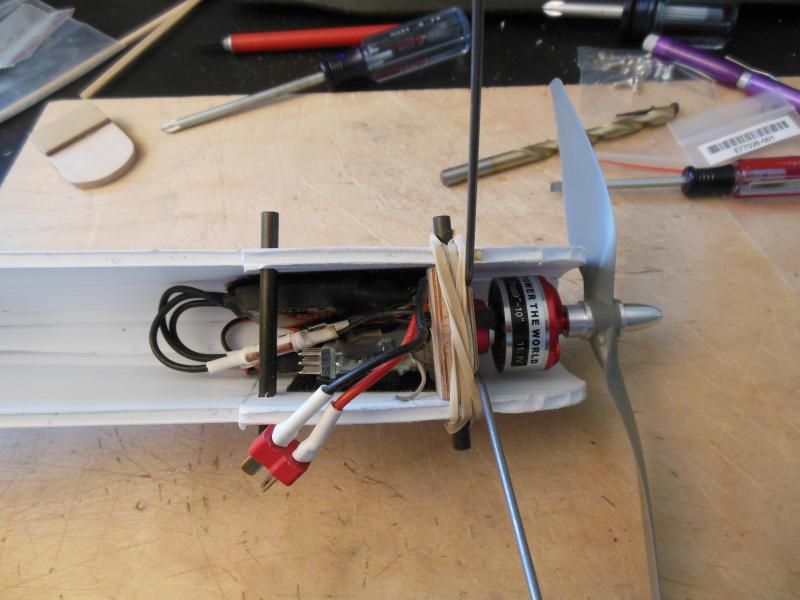
The battery goes inside, positioned to set the c.g. in the proper location. A 3S 800 just fits between the fuselage sides.
To finish the planes off, I printed out the graphics on plain heavy paper using my HP Photosmart printer. Then I attached them to the planes. I used the graphs that Keith includes with his plans for the blue and white plane. For the all-white planes, I copied a set of fuselage side and tail surface stickers I have on an unused sheet. For the wing, I took my white Cox PT-19, and put the wing in my scanner/printer. I scanned and then cleaned up the wing graphic, then printed it out. After getting the graphics on the planes, I shot three coats of flat clear Lustrekote to seal them.
Tip: If you are using plain paper for your graphics, DO NOT use 3M 77 to adhere the graphics. It was HIGHLY unsatisfactory.
Here are the planes ready to go:
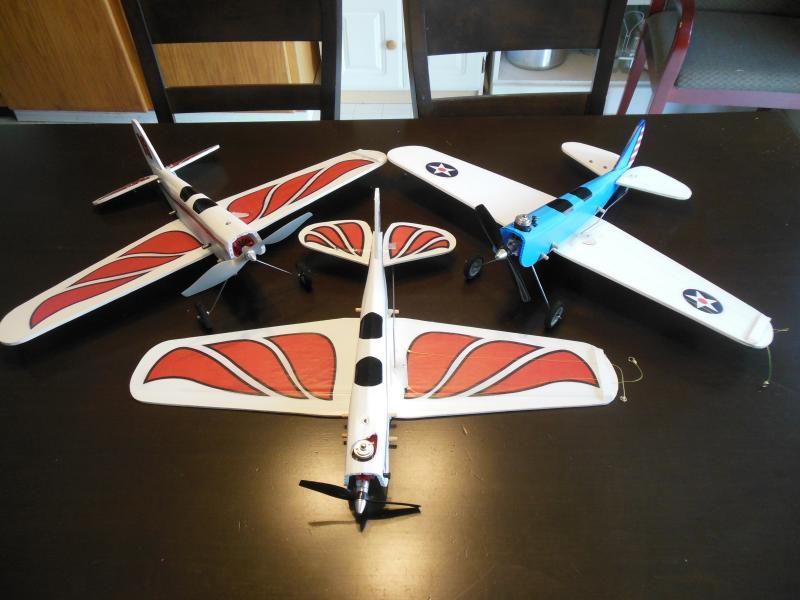
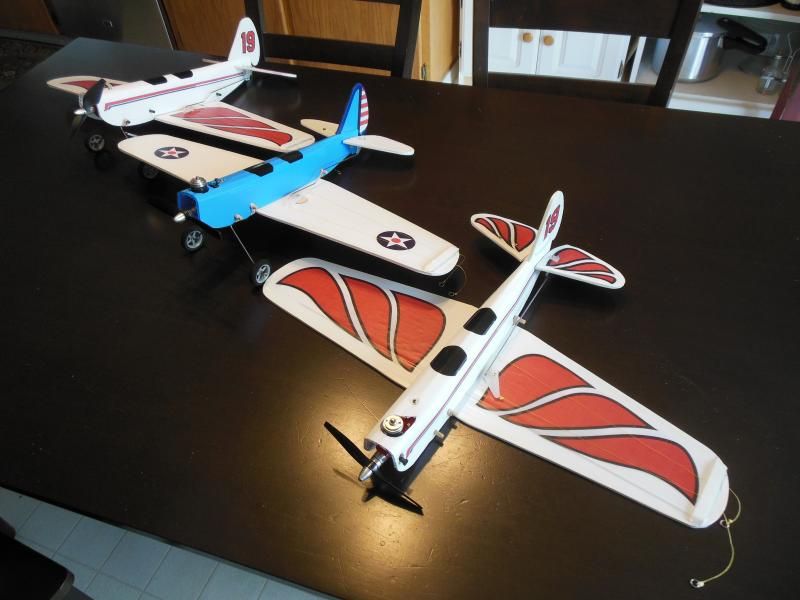
The Reedie weighs 7.65 ounces, and the rotary weighs 7.75 ounces. Right about where Keithís were at 7.8 ounces. The reedie should fly fine. The rotary should fly great with the extra oomph. The electric? Well, that one is the question. It came out at 8.7 ounces without battery, 11 ounces with the 3S 800mAh battery. The Cox version is about 10 ounces, so itís not much heavier, and it does use a 7x4E prop. So it may fly all right. The glide Iím not too sure about. Weíll see.
Mark